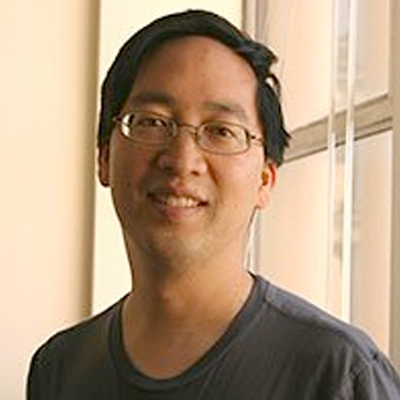Using comparative genetics to better understand the diversion of species, including humans
There is an innate curiosity in humans about where we came from that has been present in us since our earliest ancestors walked the Earth. Studying human demographic history satisfies the basic desire to understand our origins, and is also crucial for interpreting patterns of genetic variation for more applied questions, such as determining the genetic contribution to complex diseases. Dr. Jeff Wall is developing cutting-edge analytical and statistical tools to make sense of the flood of genetic data and to understand basic, fundamental questions about our history as a species and the histories of our close relatives and companions. Understanding the history of the human species will explain our past beyond recorded history and help shape our understanding of how things came to be and why things are the way they are. Comparable studies in animals help us understand why some species thrive while others do not, and which populations may need protection under the Endangered Species Act. This is directly relevant for Conservation Biology, and for preserving the biodiversity of ecosystems we interfere with. We as humans change our environment more than any other animal, and we therefore have a responsibility to other species. Dr. Wall’s research is helping conservationists and policymakers come to better decisions about protecting endangered species with valuable analyses of genetic diversity and evolutionary history.
Dr. Wall's current research is looking at genetic difference and similarities between species for clues about their past:
-
Investigating the extent of interbreeding between modern humans and 'archaic' human groups, such as Neanderthals
-
Using the full genomic sequence of Neanderthal DNA, Dr. Wall is identifying exactly which portions of each of our genomes were inherited from Neanderthals. His recent research has concluded that the inhabitants of Melanesia (the indigenous inhabitants New Guinea and Australia), have the highest percentage of Neanderthal DNA in their genome; most humans who do not originate from sub-Saharan Africa contain around 2-3%. Dr. Wall is determining how the percentage of Neanderthal DNA in individual genomes depends on a person’s ethnicity. Modern humans coexisted with Neanderthals in Eurasia for thousands of years, meaning our ancestors competed both directly (through fighting), and indirectly (through competition for resources) with Neanderthals. There was some interbreeding between the two species, and Dr. Wall is interested in discovering which characteristics were shared through combined DNA, and whether any of the Neanderthal genes we inherited have functional or medical importance for people living today.
-
-
Identifying whether indigenous Australians represent a separate wave of migration out of Africa compared to mainland Eurasia
-
The scientific consensus is that modern humans originated in Africa, and then migrated out of the continent, spreading to the rest of the world. But did this occur in one big wave that later led to the origin of all non-African groups of people, or were there two major waves of migration, with one going to mainland Eurasia and the other to Australia? Dr. Wall and his collaborators are comparing the genomes of a collection of people from all over the world to try to understand the origin of the humans that inhabit different regions. He is making inferences based on genetic similarities and differences to draw theories on how humans diverged into different ethnicities.
-
-
Determine whether enigmatic canid groups (red wolves, eastern wolves) are separate species altogether or recently admixed descendants of coyotes and grey wolves
-
There are several wolf-like species in North America and there are currently disagreements on whether any of them should be protected under the Endangered Species Act. If some of these so-called species are recent hybrid coyote-wolf populations from the last couple hundred years, then they would not be considered separate species and would not be considered for protection. The origin of both red wolves and eastern wolves is unclear. Dr. Wall is investigating the history of dogs, grey wolves, red wolves, eastern wolves and coyotes to understand the historical relationships among these groups and any recent admixture between them. This results of this work will be helpful for the U.S. government and conservationists to direct policy and guide valuable resources toward making sure that populations with unique genetic variation are targeted for protection.
-
-
Understanding the population dynamics of the endangered spotted owl and its direct competitor the invasive barred owl
- In a project similar in principle to the wolf project, Dr. Wall is uncovering information about the endangered spotted owl, a species that has gotten significant media coverage for its potential role in limiting logging in national forests (via the Endangered Species Act). The population of spotted owls, which inhabits old-growth forests across the Western U.S., has been in decline despite conservation efforts for primarily two reasons. First, human practices have destroyed the forest habitats in which the owl lives, effectively decreasing its potential living area over time. Second, the barred owl, a related species native to the Eastern United States, has recently expanded to the west and competes directly with the spotted owl for nesting sites, food, etc. Dr. Wall is interested in determining if the two species interbreed, and if any spotted owl genes have helped the barred owl adapt to new environments. This can be answered in part by analyzing the genomes of the two species, to look for evidence of interbreeding. Dr. Wall sees the genome of the two owls as hiding clues into what helps and hurts them in survival.
Bio
Dr. Wall has had a long-standing interest in our origins as humans: where we came from, who our ancestors were, and the overall story of human evolution. Stemming from this is a curiosity for discovering which characteristics make us human and identify us as the species we are today. As an undergraduate student, Dr. Wall took a class in human evolution, and was fascinated by what he learned: Darwin's Theory of Evolution, Genetics, the history of primates, etc. When he discovered in college that some researchers are approaching these concepts using computational and statistical models, he was hooked! This was sufficient to provide Dr. Wall with an initial motivation to question where humans came from, why we look the way we look, why certain features had an evolutionary advantage while some were lost or changed, and how and why different humans are more fitted for certain environments. His technical background in mathematics made it easier to transition into genetics and the study of the human genome. His primary contribution to his collaborative efforts is in developing new statistical methods for answering specific questions about a specie's history from large-scale genetic data sets.
Dr. Wall's natural affection for travel and different cultures around the world only serves to perpetuate and support his research interests. He enjoys exploring and immersing himself in other cultures while visiting foreign countries. He has a particular passion for cuisines from around the world, exploring the culinary treasures of other cultures as he explores foreign countries, and also within the culturally diverse choice of restaurants around San Francisco. He has a particular affinity for Southeast Asia and India. Dr. Wall enjoys the outdoors, and hikes often. He is working to share his interests with his 4-year-old son, who to Dr. Wall's joy can hike a few miles, running up and down the trail when properly energized and challenging Dr. Wall to keep pace.


